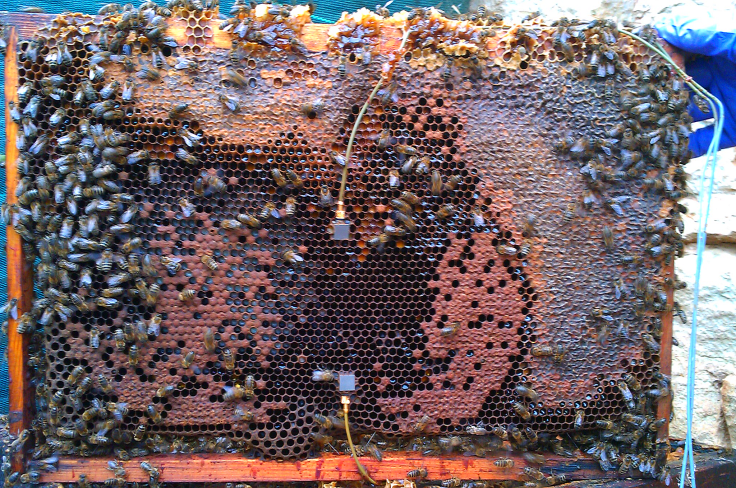Scientists Discover That Honeybees 'Whoop' When They're Startled

Indicating surprise, honeybees produce a "whooping" pulse when they bump into each other, according to newly-published research. The study, led by Martin Bencsik from Nottingham Trent University and recently published in the PLOS journal, calls into questions the previously suggested scientific explanations for the phenomenon.
Earlier explanations describing the phenomenon held that the "whoop" sound, produced through the vibrations of the wing muscles of honeybees, was made to request food. This explanation, emerging from the efforts of researchers in the 1950s, was based on the fact that the whoop signal followed bees exchanging food.
However, this explanation was discarded when researchers suggested that instead of a request for food, the whoop signal was a warning sign to stop other bees from foraging in a dangerous location with threats such as predators or other disturbances. Researchers hypothesized that bees would convey this danger signal by doing a waggle dance — behavior that directs other bees to a food source based on the position of the sun.
While carrying out the newly published study at two hives, one in the U.K. and one in France, Bencsik and his team used accelerometers (embedded in the honeycomb) to record vibrations (otherwise inaudible to humans) over the course of a year. Using software to scan the recording, and to identify the signal, researchers found that the signal happens more frequently than previously thought.
“There’s no way a bee was trying to inhibit another one that frequently, and there’s no way a bee would request food that frequently,” Bencsik told New Scientist while referring to the six or seven signals picked up every minute by the accelerometers from a small area of the honeycomb. Another significant observation was that in contrast to the waggle dances, which occurred during the day when bees are foraging, the whoop signal occurred most frequently at night.
Using cameras inserted into the hive, researchers found that the signal occurred more frequently when a bee bumps into another one.
“We suggest that, in the majority of instances, it is bees being startled that produce the signal,” Bencsik said. His team hence suggested that instead of the “stop” signal, the phenomenon should be termed the “whooping” signal.
© Copyright IBTimes 2024. All rights reserved.






















